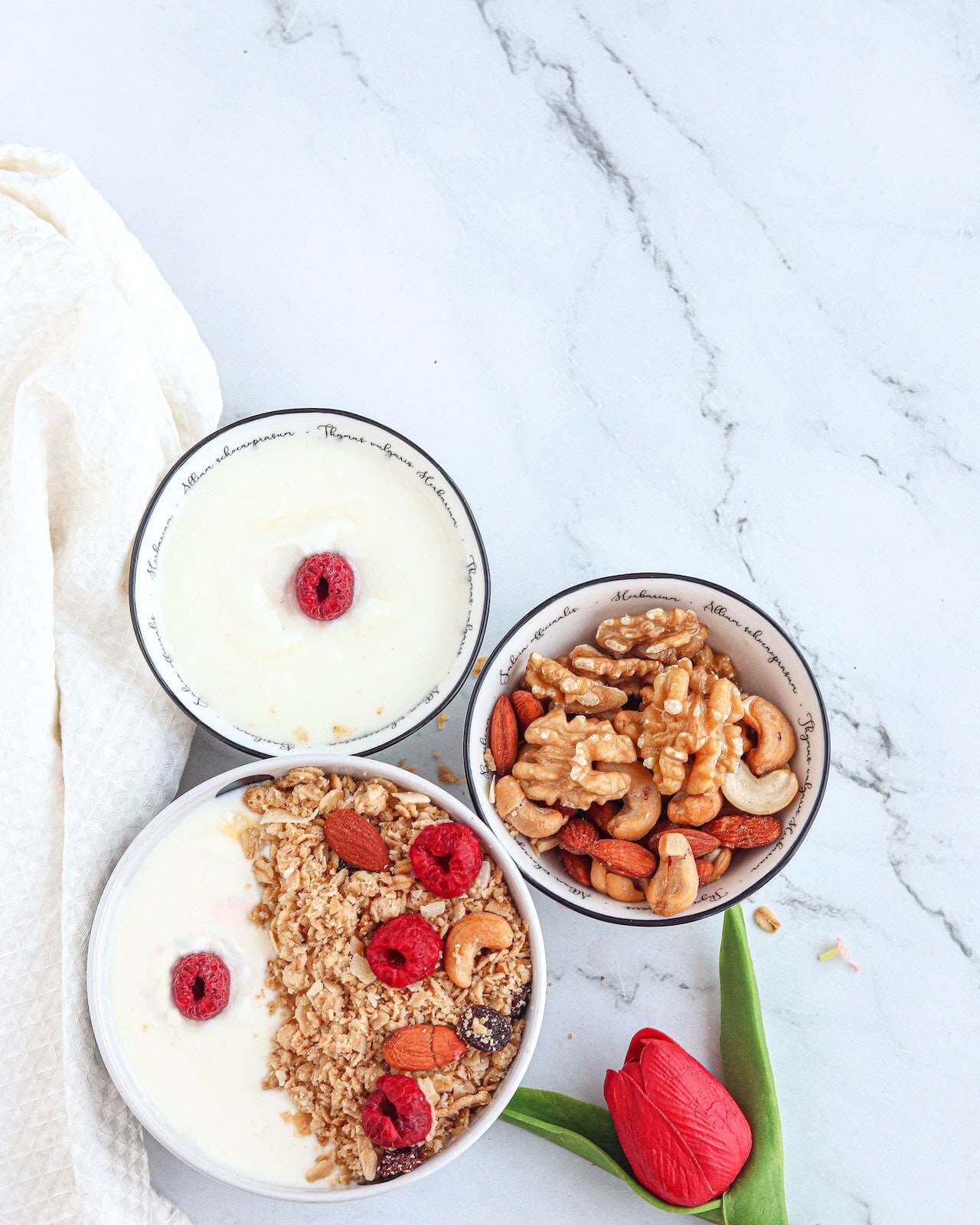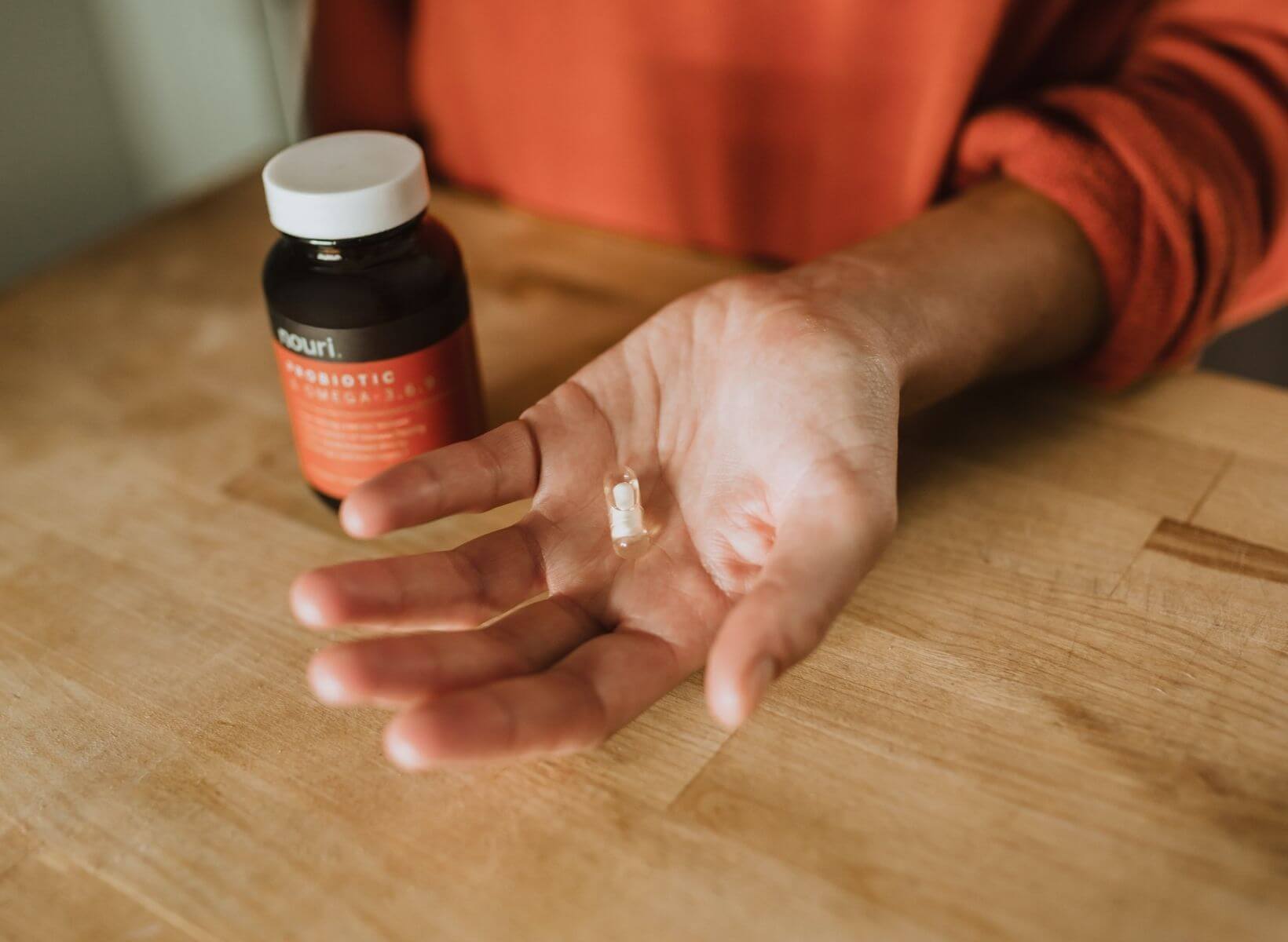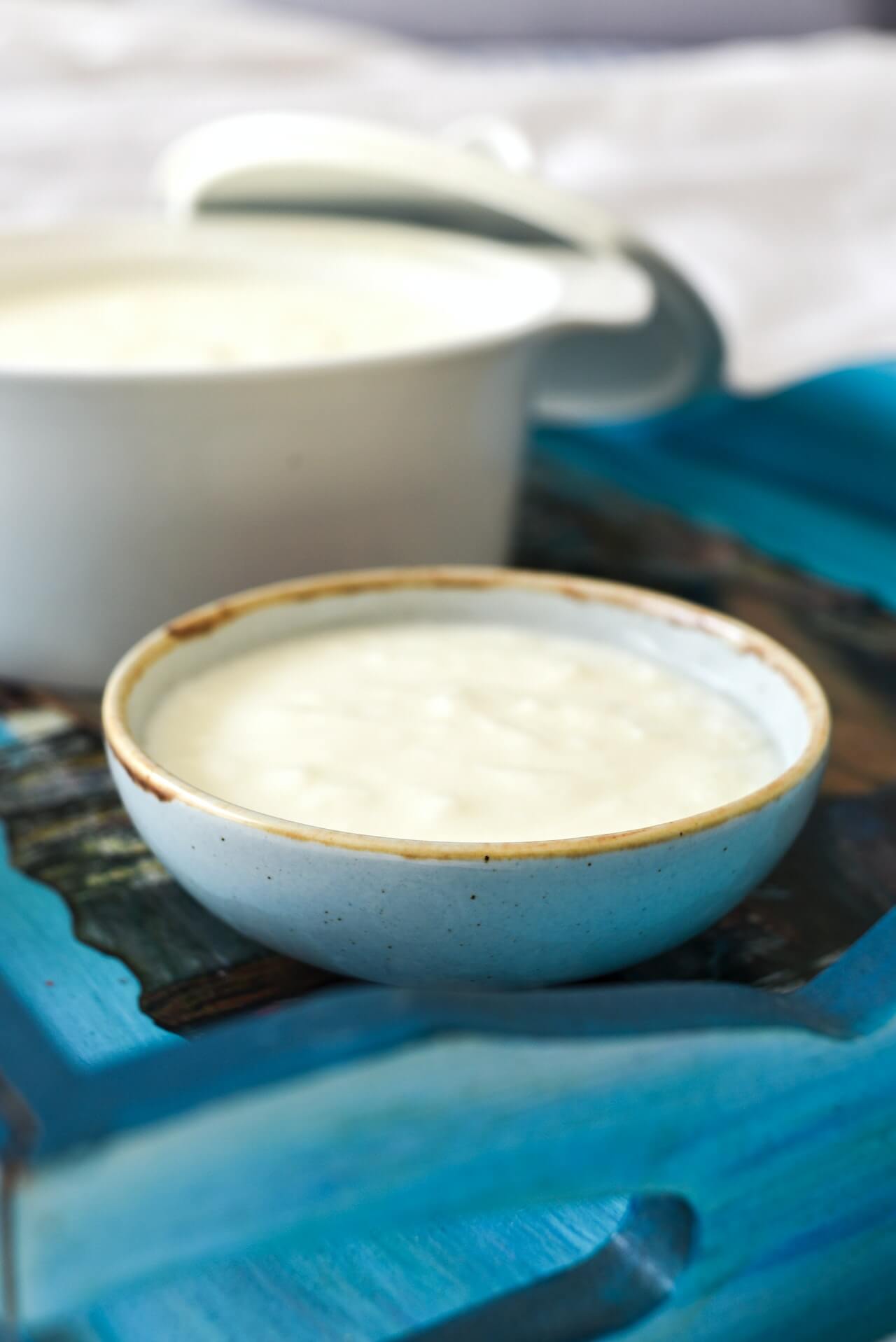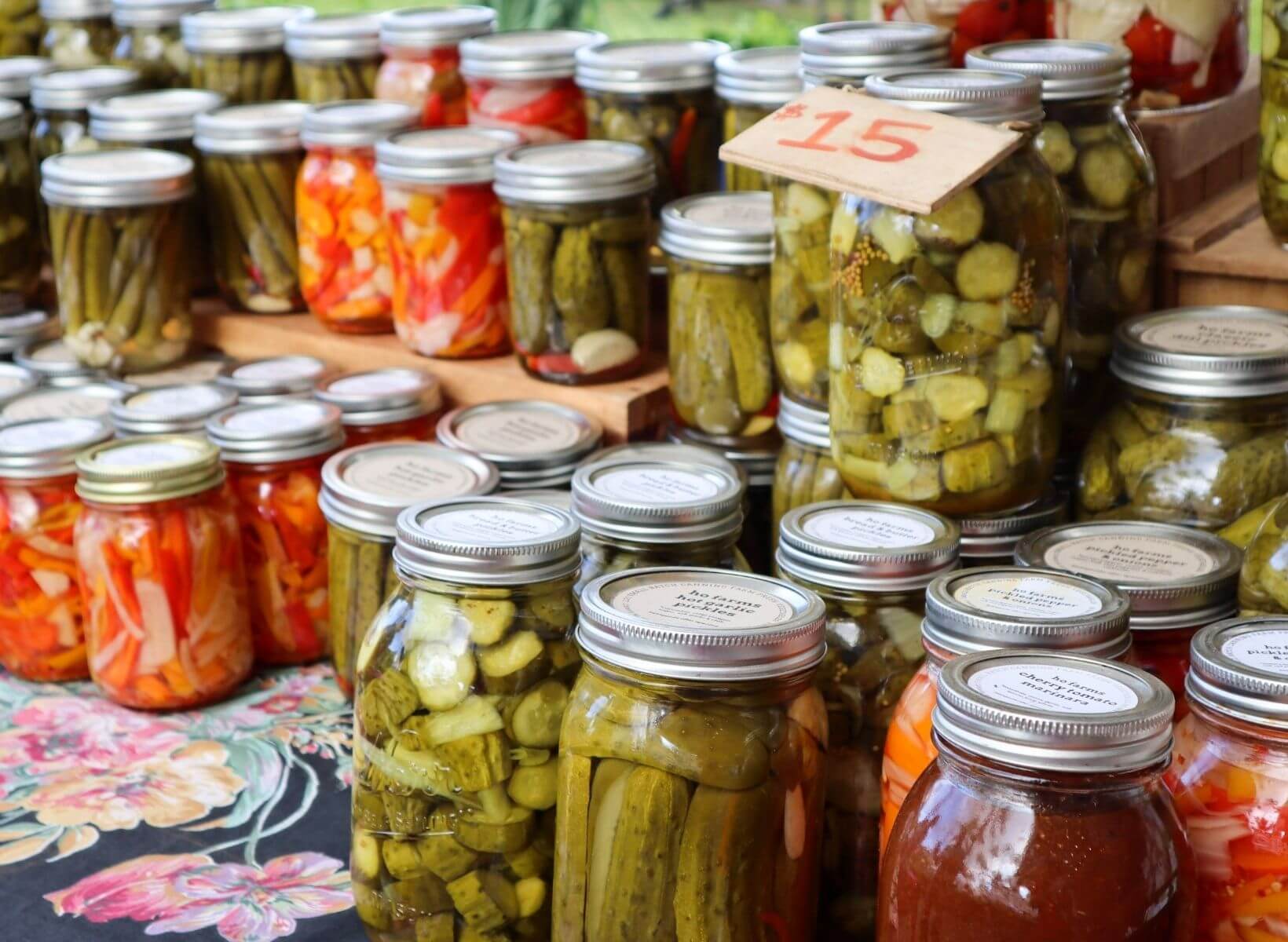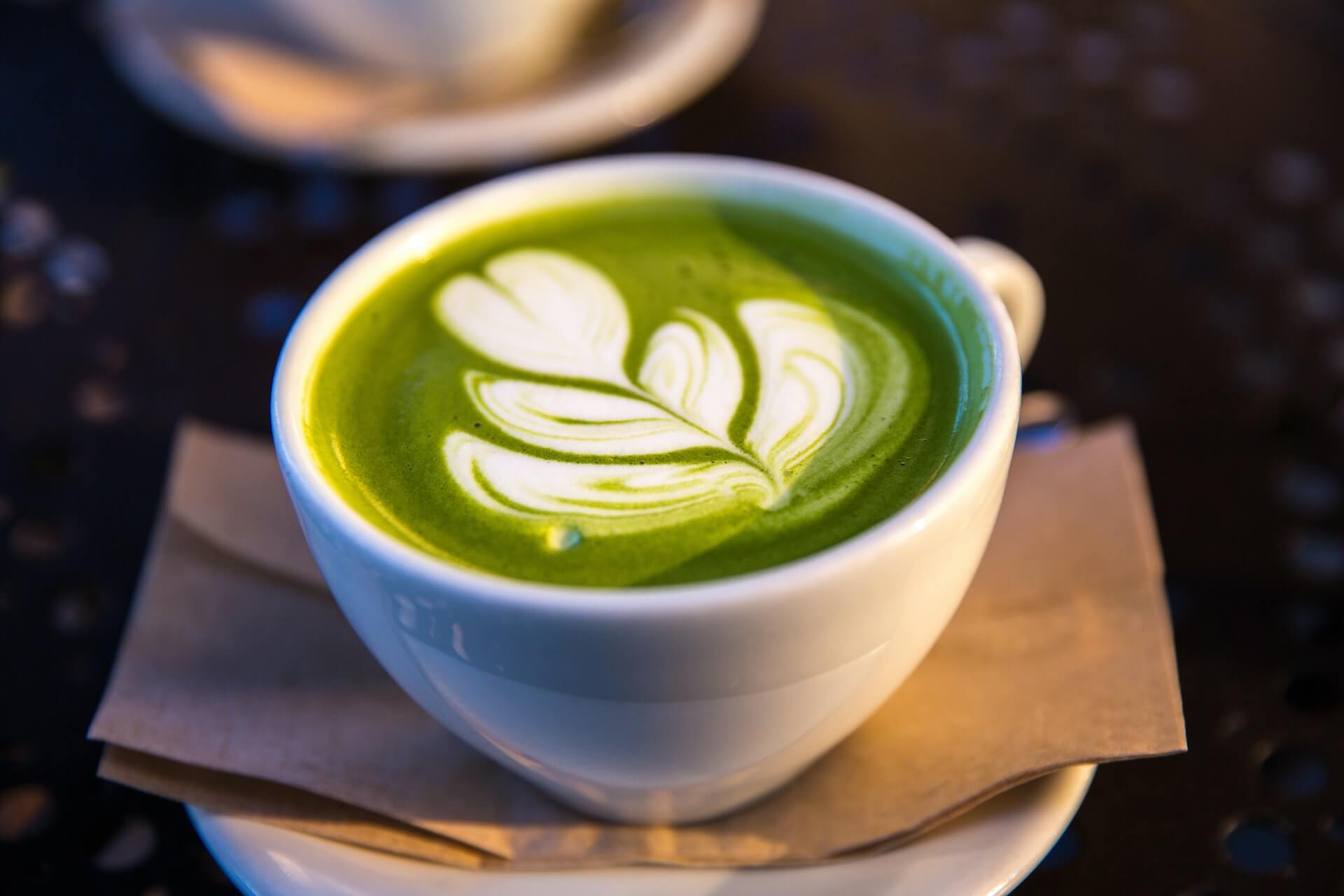Probiotics are live microorganisms that provide health benefits to humans. Probiotics from food or supplements mimic actual strains of bacteria that are found inside our gut (called the gut microbiome).
The fact that your gut contains several pounds of microbes may make you cringe, but these aren’t your typical germs. Your gut is home to hundreds of species and strains of beneficial bacteria responsible for many functions, from immunity to blood sugar balance and even chronic disease prevention.
As a result of the symbiotic relationship between our body and these bacteria, probiotics are increasingly being recognized for their role in promoting gut health. Yogurt is one of the best food sources of these beneficial bacteria. While not all types of yogurt are created the same, eating this creamy snack can easily boost your gut health.
Here’s what to know about yogurt probiotics and why they are beneficial.
What Are Yogurt Probiotics?
Yogurt is a fermented (also called cultured) food traditionally made from cow or goat milk. However, it can also be made from plant-based beverages. The fermentation process transforms the starting liquid into a thick, creamy, tart-tasting product that has been around for thousands of years.
Fermentation is defined as a process in which microorganisms (in this case, bacteria) break down the carbohydrates in food. Yogurt is made by adding lactic acid bacteria (LAB) or cultures to the milk to convert the sugar in milk (lactose) into lactic acid, which gives it a sour flavor. There are many types of lactic acid bacteria, but the two used to make yogurt are:
- Lactobacillus bulgaricus
- Streptococcus thermophilus
For a food product to be legally labeled as yogurt, these two strains must be present, but other strains of probiotics are often added, like Lactobacillus acidophilus and Bifidobacterium, to increase how many probiotics are alive and present in the final product.
The type of probiotics added at the beginning of the process will affect the consistency or flavor of the yogurt created. Some make a thicker consistency, while others may produce a tangier taste.
Lactic acid bacteria are unique because they make it through the digestive process to add to the beneficial bacteria in your microbiome. It’s important to note that if yogurt has been pasteurized or heated before probiotics are added, then any live bacteria in the product will be killed and won’t have the same benefits.
{{mid-cta}}
9 Probiotic Health Benefits
More research emerges every day about the benefits of probiotics, but some of the known benefits include:
- Support digestive health. Probiotics have been found to effectively support digestive concerns like constipation, diarrhea, and bloating.
- Reduce inflammation. Some studies suggest that probiotics may influence inflammation in the body and help lower markers of inflammation.
- Support vaginal health. Lactic acid bacteria also benefit women’s health by supporting a healthy pH to reduce bacterial vaginosis or yeast infections.
- Promote metabolic health. Metabolic health is a way to describe your body’s ability to process and store energy. Eating probiotics has been associated with improved metabolic health and a lower risk of diabetes and obesity.
- Protect the intestinal lining. Probiotics help maintain a healthy environment for beneficial bacteria to colonize. This lowers inflammation and strengthens the integrity of the lining of your intestines.
- Support a healthy immune response. The lining of your gut is home to many immune system cells. Probiotics can influence the health, behavior, and response of these immune cells.
- Anti-cancer properties. An Italian study found that those who ate more yogurt had a lower risk of colorectal cancer. We can’t determine the cause and effect with an observational study, but the results are worth paying attention to.
- Help with mood. The gut-brain connection is a two-way street where gut health influences mood and vice versa. Studies suggest that probiotics may help reduce anxiety and depressive symptoms.
- Help with lactose intolerance. Lactose intolerance means someone is unable to digest lactose, but some people with the condition can eat yogurt. Scientists believe it’s not only due to the reduction of lactose in the finished product, but the microbes themselves may produce enzymes that could help with lactose digestion.2
It’s also important to note that different strains of probiotics provide different benefits. In other words, one type may benefit immune health, while another may help with digestive health.
How to Tell If a Yogurt Has Probiotics and Choose The Best One
If the yogurt has been heat treated after probiotics are added, the likelihood of those microbes still being alive and providing a benefit when eaten is slim. Heating yogurt may have a longer shelf life, but you cannot assume you’re getting probiotics from that product.
To make sure your product contains beneficial bacteria, look for products that list “live active cultures” on the label or ingredients and that they list the stains added to the yogurt.
In addition to probiotics, it helps to look at the label to see how much sugar is in the product. Many commercially available yogurts are filled with sugar or artificial flavors. Skip these options and choose a low-sugar option instead.
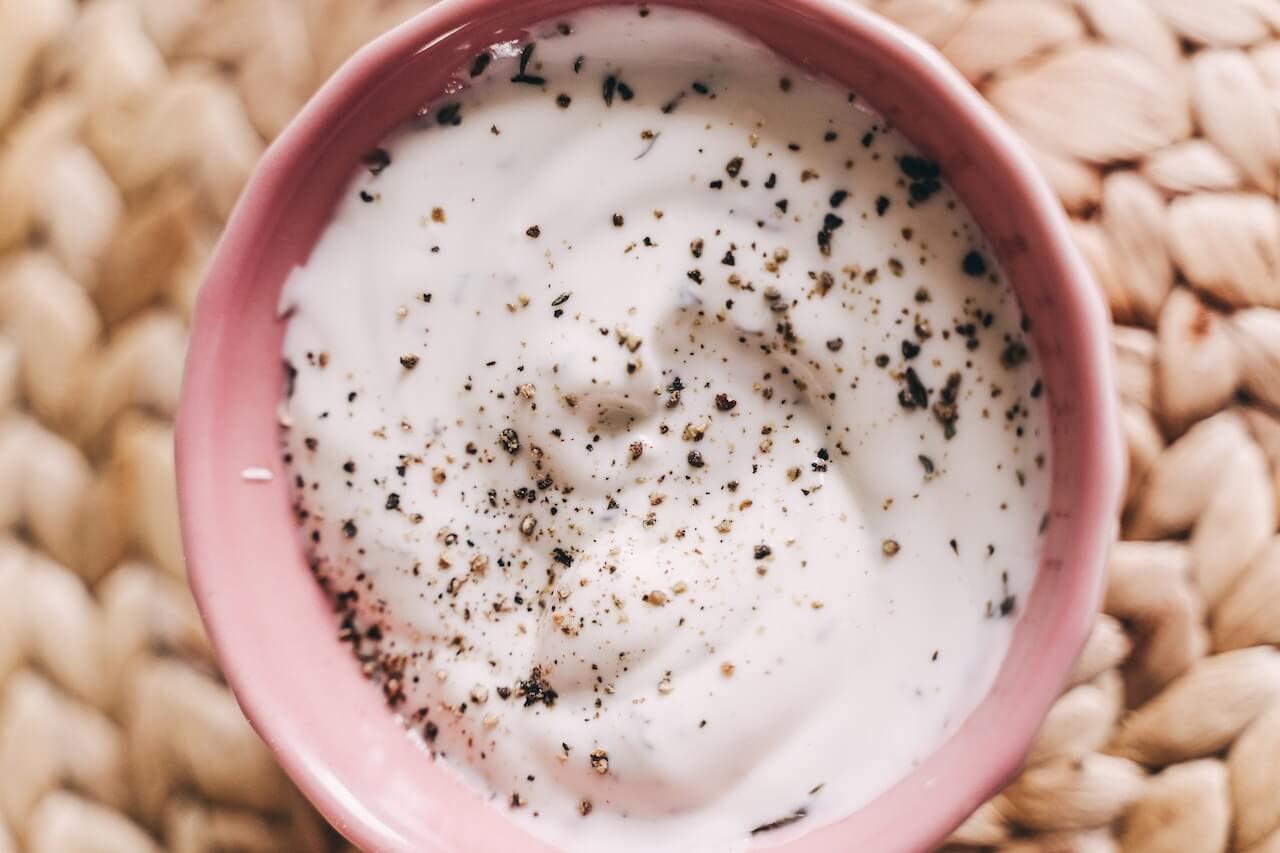
6 Types of Probiotic Yogurts
- Traditional yogurt. Starting with the basics, traditional yogurt is an excellent source of probiotics. It’s fermented with lactic acid bacteria and may contain other beneficial bacteria.
- Greek yogurt. The process of making Greek yogurt differs slightly from traditional yogurt as it’s strained an additional two or three times to remove a lot of the liquid whey. This gives Greek yogurt a thicker, creamier consistency. It contains more protein than traditional yogurt but can have the same live-active cultures.
- Lactose-free yogurt. Although some people with a lactose intolerance can tolerate regular yogurt, not everyone can. Lactose-free yogurt is made with lactose-free milk to create a more easily digestible product. The same starter LAB is used, plus additional strains may be added. You may notice additional ingredients to thicken the yogurt and improve the flavor.
- Dairy-free yogurt. As the name suggests, dairy-free yogurts are made from non-dairy sources like almond, cashew, or coconut milk. Plant-based yogurts aren’t legally required to use the same two LAB species as traditional yogurt, so strains vary. Protein content tends to be lower for dairy-free products, and gums or stabilizers are usually added to create a creamy texture.
- Icelandic yogurt. Icelandic yogurt (skyr) is a thick, creamy yogurt made from skim milk. It has a similar texture to Greek yogurt, but the fat content is much lower. The probiotic strains are similar to traditional yogurt, with additional strains added to boost numbers.
- Bulgarian yogurt. Bulgarian yogurt is a traditional yogurt made from whole milk. It’s thick and creamy and has a particular combination of bacteria unique to its production: Lactobacillus bulgaricus and Streptococcus thermophilus. It can also contain other beneficial bacteria, so the probiotic content may vary depending on how it’s made.
Best Yogurt Probiotics, According to Signos
- Siggis Icelandic Yogurt. The flavored options are lower in sugar than most store-bought options, and Siggis has a low-sugar option sweetened with stevia. Siggis uses live active cultures like L. acidophilus and Bifidobacterium in its starter cultures.
- Stonyfield Organic Plain Whole Milk Probiotic Yogurt. This creamy, whole-milk yogurt contains live cultures, including Lactobacillus acidophilus, Bifidobacterium BB-12, and L. rhamnosus. It is made with organic milk and sweetened with honey.
- Chobani Non-Fat Plain Greek. For a high protein (16 grams per serving), lower calorie (90 calories) option, non-fat Greek yogurt wins. Chobani Plain Non-Fat Greek Yogurt contains live active cultures such as L. bulgaricus, S. thermophilus, and L. rhamnosus.
- White Mountain Bulgarian. Bulgarian yogurt is extra high in probiotics and naturally low in sugar. It contains a unique blend of beneficial bacteria, including L. bulgaricus, Streptococcus thermophilus, B. Bifidum, and L. Acidophilus.
- Kite Hill Plain Almond Milk Yogurt. Kite Hill’s Plain Almond Milk Yogurt is a great option for those who cannot eat dairy products. It contains beneficial bacteria, like Lactobacillus acidophilus and Bifidobacterium, and contains a significant amount of protein (unlike many other plant-based yogurts).
DYI: Homemade Probiotic Yogurt Recipe
Feeling creative in the kitchen? You can make homemade probiotic yogurt; you only need a yogurt starter and milk. You can either use yogurt from the store as your starter or purchase starter kits online with the right type of bacteria for your yogurt.
Yogurt can also be made in an instant pot or a yogurt maker, but here are the general steps to DIY probiotic yogurt:
- Choose the type of yogurt you want and ensure you have the right starter bacteria (or store-bought yogurt) for that type.
- Heat a ½ gallon of milk or liquid to 180 degrees Fahrenheit to kill unwanted microbes (before adding your bacteria) and thicken the liquid.
- Once you hit 180 degrees, drop the heat to 115 degrees Fahrenheit and pour your milk into jars or sealed containers.
- Add your probiotic starter (containing Lactobacillus bulgaricus and Streptococcus thermophilus) or around 2-3 tablespoons of store-bought yogurt and stir.
- Incubate your yogurt. Here’s where you have a choice (and why a yogurt maker is handy). You want to keep your yogurt warm; some people use a crockpot. Or you can also put it in the oven (but don’t turn it on) and turn on the oven light. Some also suggest a warm water bath inside a cooler, placing the yogurt in the cooler, and keeping it closed. Either way, your yogurt should incubate between 8 to 12 hours.
- Remove and store in the fridge. Your yogurt should have a shelf life of around 2 weeks.
It may take a few tries to find the consistency and texture you want, but some people swear once you make yogurt at home, you never go back to store-bought.
Not Into Yogurt? 4 Alternative Probiotics Sources
If yogurt isn’t your favorite, here are 5 food options that also contain probiotics:
- Kimchi. A staple in Korean cuisine, kimchi is a combination of fermented cabbage, radishes, carrots, and other vegetables. Fermented vegetables are associated with health benefits like a reduced incidence of asthma and eczema and improved blood sugar.2
- Kefir. Like yogurt, kefir is a fermented milk beverage made with special grains containing bacteria and yeast. It’s tart and contains probiotics (like yogurt) but has a thinner consistency.
- Sauerkraut. Sauerkraut is made with shredded cabbage and salt, then fermented using lactic acid bacteria. It’s a traditional German dish full of probiotics (just choose the refrigerated or unpasteurized versions over the canned products).
- Miso. Miso is a fermented paste typically used in Japanese cuisine, made with soybeans and a koji starter culture.
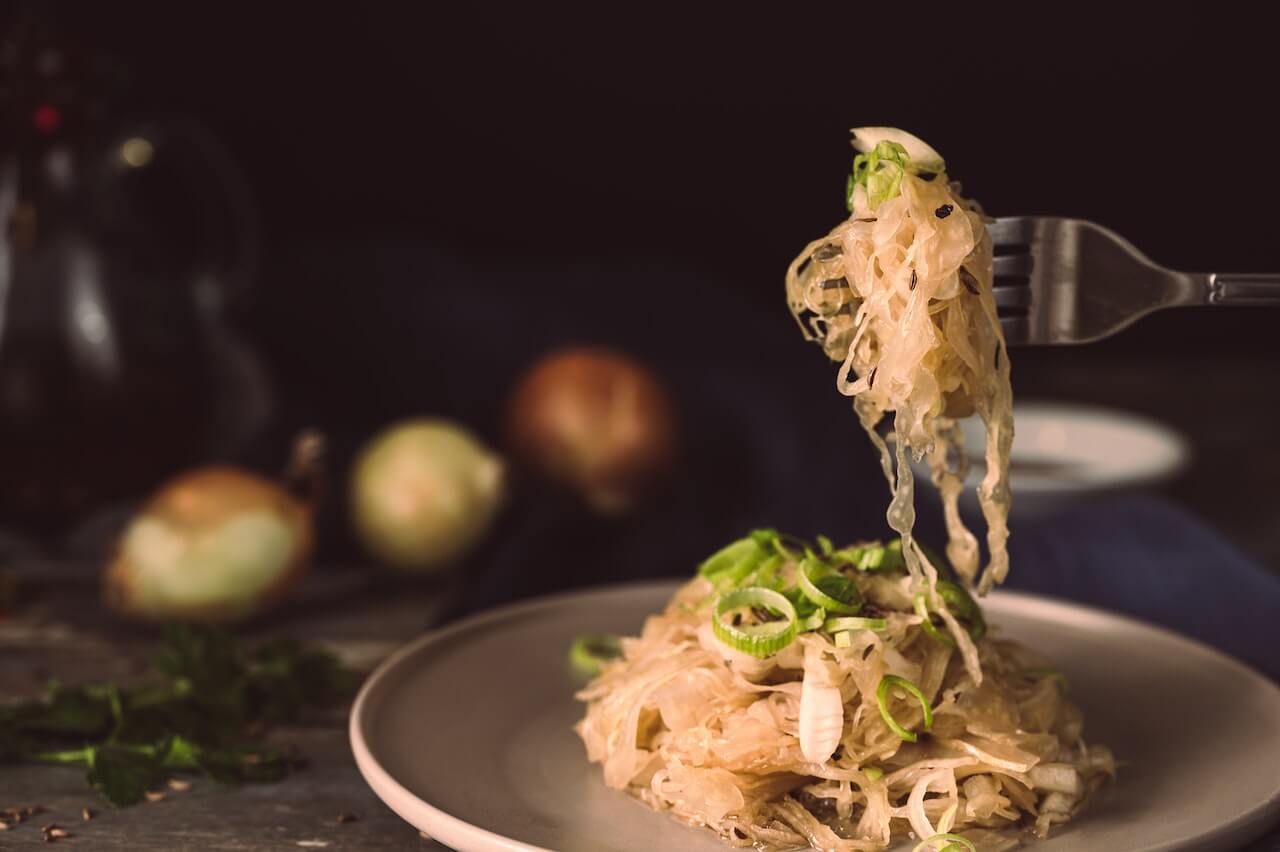
FAQs Around Yogurt Probiotics
- Which yogurt is highest in probiotics? There’s no single type of yogurt that is highest in probiotics. It depends on the type of bacteria used in the yogurt and how many of those bacteria remain viable after being cultured in the yogurt. Check the label for the amount of live and active cultures (and make sure it hasn’t been heated).
- Does all yogurt have probiotics? No, not all yogurt contains probiotics. Be sure to read the label and check for active cultures (look for the words “contains probiotics” or “contains live and active cultures”). If the yogurt has been heat treated for shelf life, you’ll miss out on these benefits.
- Does frozen yogurt have probiotics? Yes, frozen yogurt can contain probiotics (they can survive the colder temps). Just like refrigerated yogurt, check the label for active cultures.
Learn More About Healthy Nutrition with Signos’ Expert Advice
How do yogurt probiotics affect your metabolic health? You can find your body’s unique response using a continuous glucose monitor (CGM) and the Signos app.
With Signos, you can track food and see how that affects your body’s glucose levels in real time and use the data to optimize your health. Find out if Signos is a good fit for you by taking a quick quiz here.
To learn more about nutrition, healthy habits, and metabolic health, visit the Signos blog.
- Item 1
- Item 2
- item 3
Topics discussed in this article:
References
- Hills, R. D., Jr, Pontefract, B. A., Mishcon, H. R., Black, C. A., Sutton, S. C., & Theberge, C. R. (2019). Gut Microbiome: Profound Implications for Diet and Disease. Nutrients, 11(7), 1613. https://doi.org/10.3390/nu11071613
- Agustinah, W., Warjoto, R. E., & Canti, M. (2019). Yogurt Making as a Tool To Understand the Food Fermentation Process for Nonscience Participants. Journal of microbiology & biology education, 20(1), 20.1.15. https://doi.org/10.1128/jmbe.v20i1.1662
- Kok, C. R., & Hutkins, R. (2018). Yogurt and other fermented foods as sources of health-promoting bacteria. Nutrition reviews, 76(Suppl 1), 4–15. https://doi.org/10.1093/nutrit/nuy056
- Donati Zeppa, S., Agostini, D., Ferrini, F., Gervasi, M., Barbieri, E., Bartolacci, A., Piccoli, G., Saltarelli, R., Sestili, P., & Stocchi, V. (2022). Interventions on Gut Microbiota for Healthy Aging. Cells, 12(1), 34. https://doi.org/10.3390/cells12010034
- Cristofori, F., Dargenio, V. N., Dargenio, C., Miniello, V. L., Barone, M., & Francavilla, R. (2021). Anti-Inflammatory and Immunomodulatory Effects of Probiotics in Gut Inflammation: A Door to the Body. Frontiers in immunology, 12, 578386. https://doi.org/10.3389/fimmu.2021.578386
- Mei, Z., & Li, D. (2022). The role of probiotics in vaginal health. Frontiers in cellular and infection microbiology, 12, 963868. https://doi.org/10.3389/fcimb.2022.963868
- Babio, N., Becerra-Tomás, N., Martínez-González, M. Á., Corella, D., Estruch, R., Ros, E., Sayón-Orea, C., Fitó, M., Serra-Majem, L., Arós, F., Lamuela-Raventós, R. M., Lapetra, J., Gómez-Gracia, E., Fiol, M., Díaz-López, A., Sorlí, J. V., Martínez, J. A., Salas-Salvadó, J., & PREDIMED Investigators (2015). Consumption of Yogurt, Low-Fat Milk, and Other Low-Fat Dairy Products Is Associated with Lower Risk of Metabolic Syndrome Incidence in an Elderly Mediterranean Population. The Journal of nutrition, 145(10), 2308–2316. https://doi.org/10.3945/jn.115.214593
- Hemarajata, P., & Versalovic, J. (2013). Effects of probiotics on gut microbiota: mechanisms of intestinal immunomodulation and neuromodulation. Therapeutic advances in gastroenterology, 6(1), 39–51. https://doi.org/10.1177/1756283X12459294
- Hemarajata, P., & Versalovic, J. (2013). Effects of probiotics on gut microbiota: mechanisms of intestinal immunomodulation and neuromodulation. Therapeutic advances in gastroenterology, 6(1), 39–51. https://doi.org/10.1177/1756283X12459294
- Pala, V., Sieri, S., Berrino, F., Vineis, P., Sacerdote, C., Palli, D., Masala, G., Panico, S., Mattiello, A., Tumino, R., Giurdanella, M. C., Agnoli, C., Grioni, S., & Krogh, V. (2011). Yogurt consumption and risk of colorectal cancer in the Italian European prospective investigation into cancer and nutrition cohort. International journal of cancer, 129(11), 2712–2719. https://doi.org/10.1002/ijc.26193
- Luna, R. A., & Foster, J. A. (2015). Gut brain axis: diet microbiota interactions and implications for modulation of anxiety and depression. Current opinion in biotechnology, 32, 35–41. https://doi.org/10.1016/j.copbio.2014.10.007

